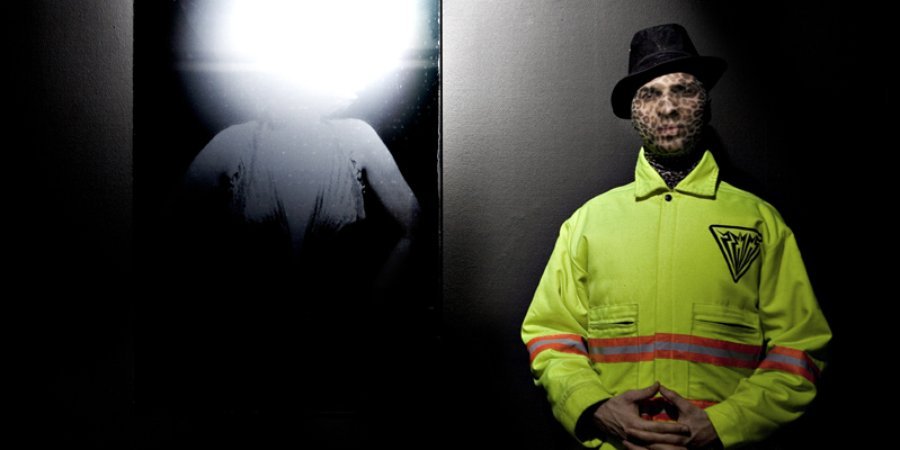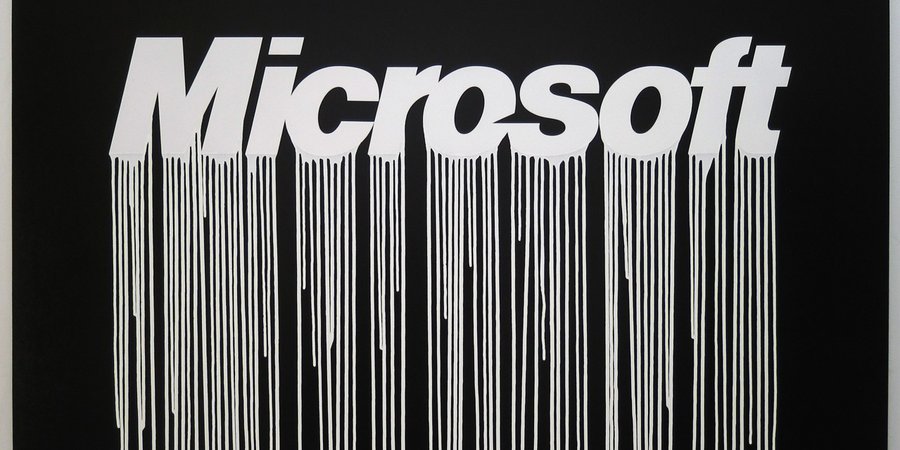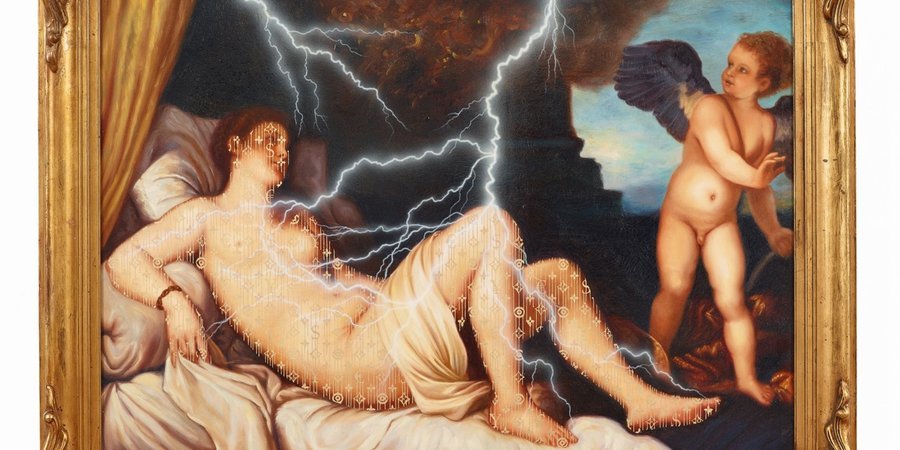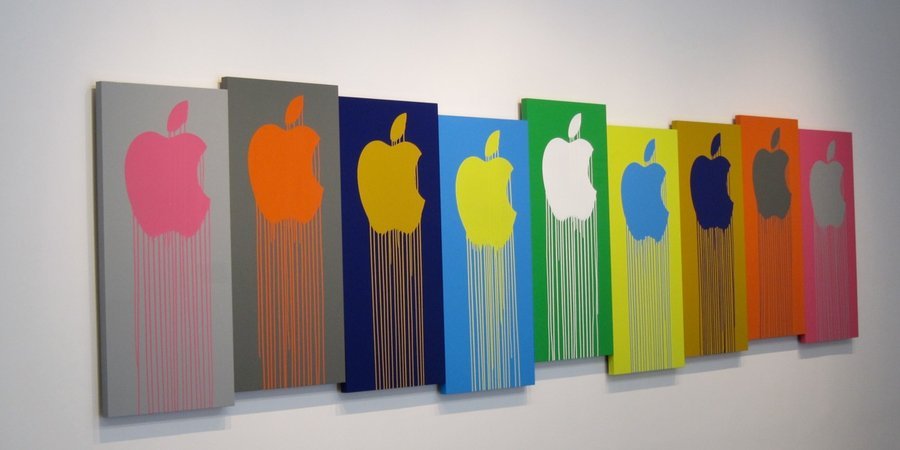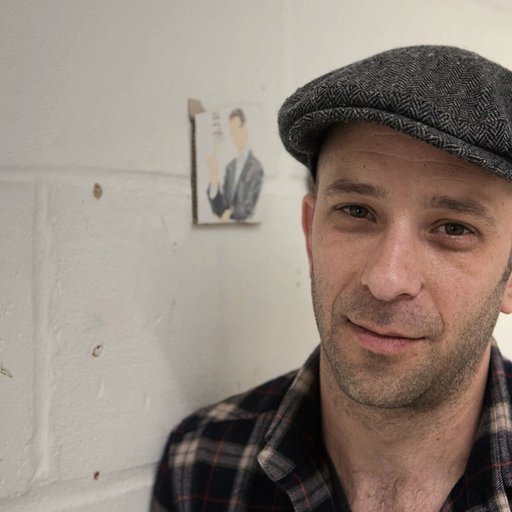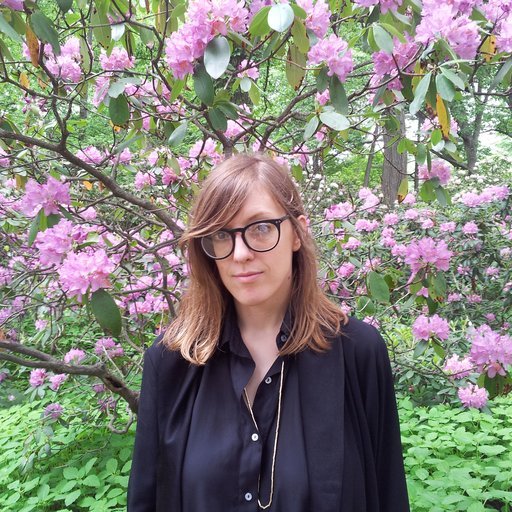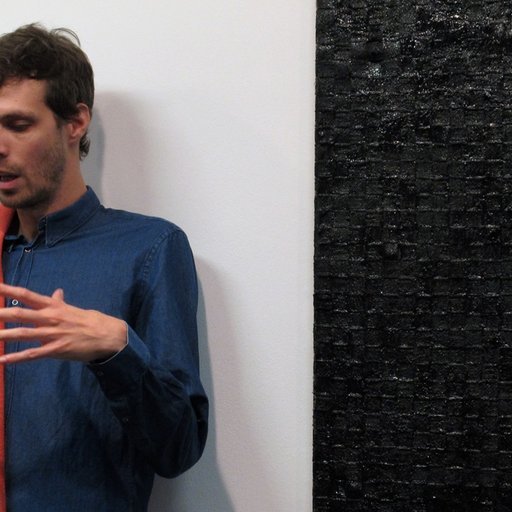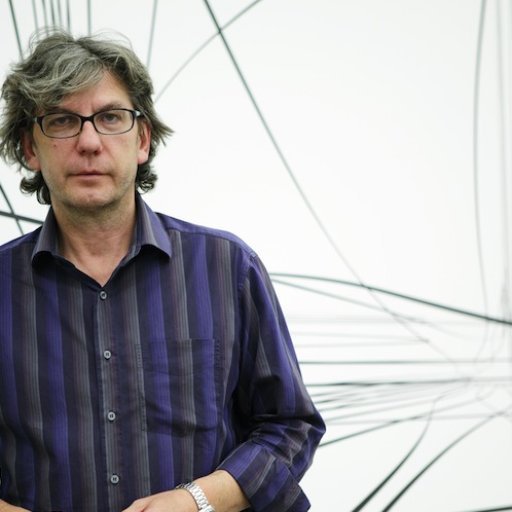French street artistZevs (pronounced "Zeus," like the Greek god) fearlessly appropriates logos of corporate companies for messy, irreverent works that he spray-paints in large scale on public walls and lately also shows in galleries. In some cases, his provocative approach has led to rather extreme consequences. In 2009, Zevs was arrested in Hong Kong for spray-painting a Chanel logo onto the side of a Giorgio Armani store. That logo was one of his many so-called "liquidated" images—drippy compositions that appear to melt corporate logos, causing their colors to drip down the wall—and they are just one of his many clever ways of taking on commercial culture.
Now, with Zevs's "Traffics in Icons" opening at New York's De Buck Gallery, we spoke with the artist about his arrest, how art might have played a role in the economic downturn, and the ways power is exercised in corporate branding.
You are known for your “liquidations” of logos for companies from Coca Cola to Apple. These satirical pieces are obviously a commentary on consumer culture. What do you hope to accomplish, or what ideas do you want to convey, in these interventions?
The logo is the keystone of a brand’s identity—it interacts with a person’s emotions, serving as an extremely efficient and fast “silent seller.” Logos are meant to be seen, and so when the logos of Chanel or Louis Vuitton are liquidated, it is an attack on a network of signs of identification, social codes, significations, and emotions. By suggesting an opposing force, liquidation recalls overconsumption, the tyranny of advertising and the slang of the appearances. At the same time, it maintains ambivalence. Iappropriate a logo, and in doing so, I apply a new aesthetic to its form.
The funny thing is, many companies have re-appropriated my work for their productions. Metaphorically, we can think of this as a loop between poison and antidote, but in reality, as in the spirit of aikido, there is no fight, since it ends just as it starts.
In the past few years, your liquidations have become more political. In the years following the global economic collapse, you "melted" the logos of Lehman Brothers and Goldman Sachs, two financial firms that prominently contributed to the downturn. What led you to tackle these banks in your art?
I consider artistic expression to be an opposing force based on power of itself. I reverse the power to change the flow at my advantage. When I liquidated the image of UBS in Zurich, or the biggest financial firms in New York, it was a way of reacting to a society of signs and and its compulsion to consume. The liquidated logos deal with public and private realms within society while also confronting what art represents and its relationship to consumption.
How do you see the contemporary art world interacting with the worlds of luxury and high finance that you critique in your work?
I think the art world is increasingly intertwined with fashion and luxury due to the frequency of trends and big brand names. The art world is also mixed up in the financial market because its investors buy art. In ways, the work of artists feeds this growing market. I consider criticism in art to be like the core of fruit. A work of art without a core will only survive a short period until it is destroyed by the material of its work.
The series of liquidated logos, particularly of luxury and finance brands, depict the correlation of these three worlds. These superlogos lose their force when they are appropriated in art, just like Superman with Kryptonite.
In addition to appropriating corporate logos, your liquidations sometimes borrow from art history, transposing the Louis Vuitton logo onto da Vinci’s Vitruvian Man, for example. What draws you to working in this classical context?
In 2008 I had a solo exhibition at the Glyptotek in Denmark, which houses a large collection of Impressionist painting and the largest collection of Auguste Rodin's work outside of Paris. I love working with what already exists, so it was natural that I wanted to explore the possibility of revisiting and creating dialogues between my own work and the museum's collection. I like to consider art spaces, literally as well as figuratively, as possible places for a story or a performance to take place. On the back façade of the museum, I executed big flames spreading across the museum by cleaning the brick. Rodin's famous sculpture, The Thinker, which was originally based on a bent-over figure from Michelangelo's doomsday fresco in the Sistine Chapel, sat in front of the flames, once again enveloped in the burning heat of hell.
There's also a constant dialogue between art and luxury items throughout art history. When comparing Leonardo da Vinci's monogram with the Louis Vuitton monogram, similarities arise. Even to that extent, that LV looks like a copy of LDV. So, I created a bag with a golden LDV logo on the side. It is "an original copy," a copy more original than the original itself.
And what about your name, which is pronounced like "Zeus?" That also seems to imply a classical context.
The names Zevs is about something a bit different. Zevs was the code-name for the suburban train that almost crushed me when I was writing in a dark railway tunnel as a kid. The Greek mythological god of gods refers to another mythology, the mythology of superheroes, which also inspires me. I find it interesting to use the mythic power of the superhero to reverse its energy and to stigmatize the disintegration of images and signs.
You are also known for your Visual Violations, in which you obscure the faces of celebrities or famous political and cultural figures, rendering them difficult to recognize—similarly to the way your liquidations obscure commercial brands. Why do you seek to blot out these celebrities’ images?
The world is full of images, and these images lose their meaning in our overwhelmed minds. They soon become indiscernible in a society full of images. The Visual Violations denounce the lack of meaning and essence in these almighty images. There is an idea behind every image, no matter how simple, subversive, or dictatorial it is. It is up to us to preserve that last area of liberty. As free individuals, we must look for a meaning behind these omnipotent images if they have one or create one if they do not. The nonviolent violence of art-making can be one way to do it.
For several performances, you applied bloody Chanel and Louis Vuitton logos onto the backs of nude women, who you refer to as “victims.” In one performance, you make it seem as if the woman was the victim of a murder. What is the thinking behind these pieces, and why do you find it necessary to exclusively involve women?
It's true that the liquidation work has led to body art performances in Hong Kong in 2008 and the legendary Zurich's legendary Cabaret Voltaire in 2010. I created a tattoo of the Chanel logo in Hong Kong and the Vuitton logo—Nude Liquidated LV Murakami—in Zurich on the back of a naked young woman. Bleeding logos applied directly to the skin of these women provide a striking image for the viewer. The gesture reminded me of Man Ray’s photo The Violin of Ingres, or of an Ingres bather who thinks that pleasure is not found in nudity but instead in the brands she wears. These attacks on luxury brands highlight issues of the body as object, the submission of the body to the imperatives of marketing, violence against women—and men to a lesser extent—as well as victims of fashion, whose fantasies are to format a perfect mirror image of the global economy.
You’ve also done “visual kidnappings,” where you cut figures out of billboards and metaphorically hold the cutout hostage, leaving a spray-painted note asking for ransom. Have the corporations that own the advertisements ever reacted to one of these “kidnappings?"
The Visual Kidnapping was a long performance that began in Berlin in 2002 and ended at the Palais de Tokyo in Paris in 2005. It became a game of cat and mouse. Armed with my scalpel, I climbed the front of a hotel where a Lavazza poster was displayed. An hour and a half later, the hostage was mine and I left the hotel, leaving behind a hole in the poster and a sentence reading, "VISUAL KIDNAPPING – PAY NOW!” That set off a paper chase began with Lavazza. I demanded a ransom of €500,000, the equivalent of the cost of a marketing campaign. In 2005, after numerous negotiations, an agreement was reached with the Lavazza company, and the ransom was used to support the contemporary art scene in France. This event took the form of a happening, and was seen by certain skeptics as the hijacking of an anti-ad strategy of subversion. It was transformed into a huge media frenzy for Lavazza, a brand that ironically proclaimed “Express Yourself!" as its slogan in its advertisements.
In 2009 you were arrested in Hong Kong after creating one of your Chanel liquidations. What was the experience like, and how did it affect the way you approach your work?
My artistic experience in Hong Kong was one of the most intense experiences thus far in my career. My attack was comparable to a knight's move in chess. Chanel and Armani were the opponent's king and queen, and Hong Kong was the chessboard. I found myself stuck in a difficult situation, having to prove to the judge of the Hong Kong court that my act was artistic, not criminal. I filmed everything that happened that summer, and I'm thinking about producing a movie about that story one day.
What was do you consider your first significant artistic intervention?
Well, I would say one of my earliest significant experiences was a "conceptual prank." In 1998, I made a series of anonymous phone calls to 100 Parisian galleries, asking them, "How does one become an artist?" The responses of that time are so different from today. The entire discussions were recorded, but I've never been actually exhibited them.
What artists have been most influential to your work?
I especially remember the works of conceptual artists, thanks to all my visits to the Pompidou Center in Paris over the last 15 years. Some of the most influential artworks for me are Brancusi's Sleeping Muse, Matisse's The Red Studio, Malevich's Black Square, Duchamp's Bicycle Wheel and Bottle Rack, Picabia's Careful Painting, Brancusi's Endless Column, Man Ray's The Enigma of Isidore Ducasse, Magritte's The Treachery of Images, Matta's Inscapes, Pollock's drip paintings, Tinguely's Drawing Machine, Yves Klein's Monochromes, Manzoni's Base of the World, Twombly's work, Arman's Full Up, Jasper Johns's Painted Bronze, Warhol's Dick Tracy, Dan Flavin's gold, pink, and red, and Allan Kaprow's Yard. I also love the work of Carl Andre, Bruce Nauman, Daniel Buren, Lawrence Weiner, Sol LeWitt and Claude Rutault. In terms of photography, my favorites are Guy Bourdin, Weegee, and Atget. Recently, a friend also introduced me to the Incoherent Arts, an artistic movement dating from the end of the 19th century that led to several schools from the 20th century.
Is there anything you collect yourself?
Nothing, except for images I've downloaded from the Internet. I keep them on my computer desktop.
What are you working on now?
I am currently focused on my solo show at De Buck Gallery, as well as a monographic book entitled Execution d'une image that will be published in France by Gallimard/Alternative in October.











